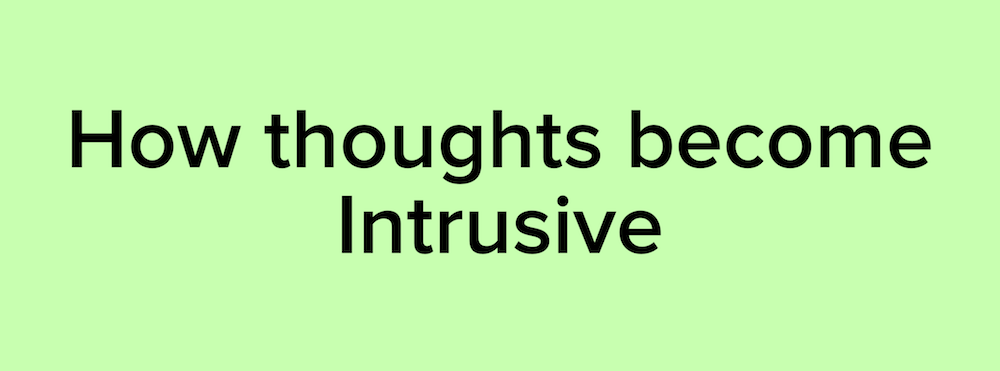
/impact-of-ocd-on-sex-life-5086811_final3-7467f0d6944041a8be89a44d92913ae9.png)

The technique is called response prevention because you learn to prevent your habitual compulsive responses and to replace them with new, more constructive behaviors. We've made some modifications in this method to allow you to do it on your own.
#Medicine for stopping intrusive thoughts ocd how to
In traditional exposure and response prevention, people with OCD learn - under the continuing guidance of a professional therapist - to expose themselves to stimuli that intensify their obsessive thoughts and compulsive urges and then learn how to resist responding to those thoughts and urges in a compulsive manner.įor example, people who obsess irrationally about contamination from dirt may be instructed to hold something dirty in their hands and then not wash for at least three hours. Research has shown that exposure and response prevention are very effective behavior therapy techniques for treating OCD. By learning some basic facts about OCD, and recognizing that it is a medical condition that responds to treatment, you will be able to overcome the urges to do compulsive behaviors and will master new ways to cope with bothersome, obsessive thoughts.Īt UCLA, we call this approach "cognitive-biobehavioral self-treatment." The word cognitive is from the Latin word "to know" knowledge plays an important role in this approach to teaching basic behavior therapy techniques. In this manual, I will teach you how to become your own behavioral therapist. The concept of self-treatment as part of a behavioral therapy approach is a major advance. Over the past twenty years, behavior therapy has been shown to be extremely effective in treating obsessive-compulsive disorder (OCD). If you have obsessive thoughts and compulsive behaviors, you will be relieved to learn of significant advances in the treatment of this condition. Jeffrey Schwartz's Four Steps for OCD Principles from Brainlock Help Overcome OCD


 0 kommentar(er)
0 kommentar(er)
